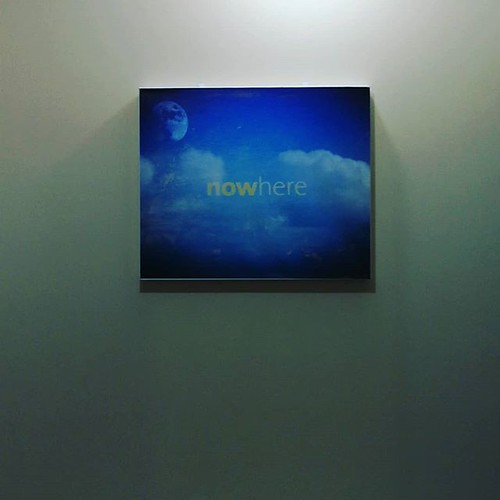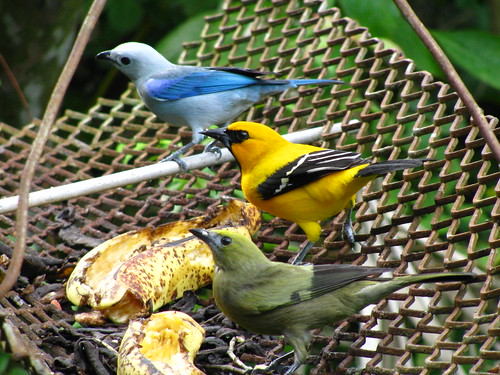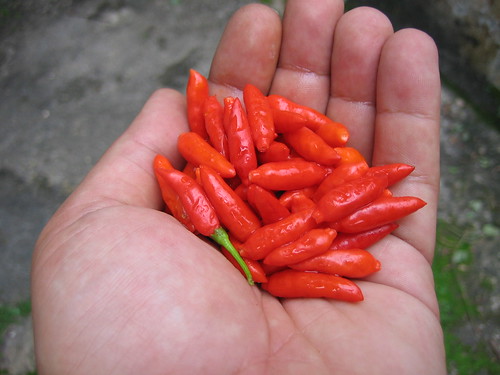Recovering yesterday from the silicon insult, there was a quote that I kept coming back to as I awoke now and then.
You can know the name of a bird in all the languages of the world, but when you’re finished, you’ll know absolutely nothing whatever about the bird… So let’s look at the bird and see what it’s doing — that’s what counts. I learned very early the difference between knowing the name of something and knowing something.
Richard P. Feynman, “What Do You Care What Other People Think?”: Further Adventures of a Curious Character
We use labels to communicate things to other people, and it’s all based on some common perception. The bird pictured is blue-grey, so some very smart person called it a blue-grey tanager, where tanager is a type of bird that has common characteristics to other birds we call tanagers. Then someone who was taught too much Latin in school decided it looked a lot like the ‘Bishop of Thraupi’ (the literal translation). I have no idea why it’s called a blue-jean in Trinidad and Tobago, but it is what it is.
As most creatures, they’re interesting in their own way. I spent a lot of time watching birds in Trinidad and Tobago, taking pictures of them as a challenge, most of which ended up on Flickr and most of which weren’t that great. In doing that, I learned about how the birds interacted with others, what they ate, and when I talk about a blue-grey tanager all of that is behind the label. I know what the bird is based on what it does, how it behaves, etc.
It’s not just a label.
In the movie ‘Good Will Hunting’, a similar point was made in one of the more epic tirades done by the late, great Robin Williams:
…You’re an orphan right? You think I know the first thing about how hard your life has been, how you feel, who you are, because I read Oliver Twist? Does that encapsulate you?
“Good Will Hunting” (1997), Sean speaking to Will.
The obvious way to go with this would be about identity politics and some of the silliness that ensues with it because clearly labels don’t mean as much as who the people we’re talking about actually are, but that’s not where I’m going with it – though in a way, I am.
When we look at generative AI, and how it can be trained on the way we have communicated in the past, be it art, writing, etc, all it’s really doing is using the labels as puppets. It doesn’t understand what it has spit out in response to a prompt.
I’ve met people like that. In fact, in my younger days, I was more like that than even now I care to admit – reading about things I didn’t understand, and having my world view defined by the views of others. Actual experience varies, and that’s the point of all of it. That diversity of experience is what enriches our society, or should. It’s additive.
It’s impossible for us to be able to share all of our experiences with others, but we can share more if we go beyond the labels. That one picture above of the blue-grey tanager did not just happen. It required me to understand the bird to get close enough with only 3x magnification on one of the original digital cameras to get the detail I did, it took trimming the plumb tree just right to allow the branches to be close enough from the top of the stairs, and it required a lot of patience in developing trust with the birds – that I wasn’t going to eat them.
The very experiences that make us human are the things we need to fall back on to be human these days, not the rote memorization and regurgitation of labels that generative artificial intelligences are much better at than we are.
We need to understand these things.



 I found myself this morning dusting off the Sony Alpha 6000 and making sure it was charged because of an event that I had RSVP’d for on a whim. I don’t even know that I’ll need it, but the Trinidad and Tobago Photography Society (which shares the acronym TTPS, with the distinction that while both shoot targets, one tends to leave them alive and unwounded).
I found myself this morning dusting off the Sony Alpha 6000 and making sure it was charged because of an event that I had RSVP’d for on a whim. I don’t even know that I’ll need it, but the Trinidad and Tobago Photography Society (which shares the acronym TTPS, with the distinction that while both shoot targets, one tends to leave them alive and unwounded).


![Blue-grey tanager [thraupis episcopus]](https://farm3.staticflickr.com/2169/2360483853_86136b8448.jpg)








